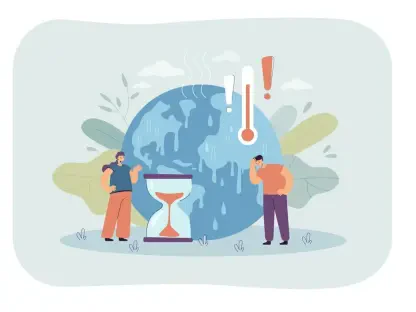Overview of a Rapidly Evolving Landscape
In an era where data breaches dominate headlines and consumer trust hangs in the balance, the United States faces a critical juncture in data privacy regulation, with a staggering 19 states having enacted comprehensive privacy laws as of this year. Nine new statutes are set to come into effect in 2025 alone, reflecting an unprecedented push to safeguard personal information. This surge, driven by the absence of a federal framework, paints a picture of a fragmented yet dynamic regulatory environment where businesses scramble to keep pace. The pioneering California Consumer Privacy Act (CCPA) has set a benchmark, inspiring states from Colorado to Texas to craft their own rules, while public demand for control over personal data continues to grow. This report delves into the complexities of this state-driven movement, exploring the trends, challenges, and future implications for organizations and consumers alike.
The Rise of State-Level Privacy Legislation in the US
The proliferation of state-level data privacy laws marks a significant shift in how personal information is protected across the nation. With nine new laws enacted this year, states are stepping into the void left by the lack of a unified federal standard, creating a patchwork of regulations that vary widely in scope and application. This momentum builds on the foundation laid by the CCPA, which since its inception has influenced states like Virginia and Montana to develop robust frameworks tailored to their populations.
Data privacy has emerged as a pressing concern in the digital age, fueled by high-profile breaches and increasing consumer awareness. Citizens are demanding greater transparency and control over how their information is collected and used, pushing lawmakers to act swiftly at the state level. This trend highlights a broader cultural shift toward prioritizing individual rights in an increasingly connected world.
In the absence of federal legislation, states have become the primary architects of data protection, often relying on insights from organizations like the International Association of Privacy Professionals (IAPP). This decentralized approach, while empowering local governance, introduces complexities for businesses operating across multiple jurisdictions. The stage is set for a deeper examination of how these laws are shaping the privacy landscape.
Key Trends and Developments in State Privacy Laws
Diverse Regulatory Approaches Across States
State privacy laws exhibit a remarkable range of compliance thresholds, reflecting unique jurisdictional priorities. For instance, Nebraska imposes no minimum threshold for data processing, meaning any entity handling resident data must comply, whereas California requires organizations to process data of at least 100,000 residents to fall under its purview. Such disparities create a challenging environment for businesses to navigate.
Beyond thresholds, exemptions and definitions of sensitive data further complicate the regulatory picture. While most states exempt government agencies and entities under federal laws like HIPAA, nuances exist—California includes philosophical beliefs as sensitive data, while Maryland emphasizes national origin. These variations underscore how states tailor laws to address specific cultural or demographic concerns.
Additionally, local priorities shape legislative details, with Delaware offering exemptions for non-profits supporting abuse victims and Maryland focusing on emergency response data rules. This granularity ensures relevance to state-specific issues but adds layers of intricacy for compliance teams. The trend toward specificity signals a maturing approach to privacy that prioritizes localized needs over a one-size-fits-all model.
Growth Projections and Legislative Momentum
Currently, 19 states enforce comprehensive privacy laws, with Indiana, Kentucky, and Rhode Island slated to implement theirs by 2026. This expansion shows no signs of slowing, as 16 additional states, including heavyweights like Massachusetts and New York, are actively considering similar bills. The pace of legislation reflects a heightened urgency to counter digital threats.
Forecasts suggest that this momentum will reshape data protection practices nationwide over the next few years. As consumer advocacy gains traction, states are likely to introduce even more stringent measures, potentially influencing others to follow suit. The ripple effect of these laws could standardize certain protections while maintaining regional distinctions.
Looking ahead, the accelerating legislative activity points to a future where nearly every state may have its own privacy framework within a decade. This trajectory, driven by public demand and technological advancements, indicates that organizations must prepare for an ever-evolving set of requirements. Staying ahead of these changes will be critical for maintaining compliance and consumer trust.
Compliance Challenges in a Fragmented Regulatory Landscape
Navigating the diverse array of state privacy laws presents substantial hurdles for organizations, particularly those operating across state lines. Differing requirements, such as varying data processing thresholds or disclosure obligations, demand meticulous attention to detail and often require localized legal expertise. A business compliant in one state may find itself non-compliant in another due to subtle regulatory differences.
Smaller organizations face an even steeper challenge, often lacking the resources to address the breadth of compliance demands. The cost of monitoring amendments and implementing necessary changes can be prohibitive, potentially stifling growth or innovation. This disparity between large and small entities highlights an uneven playing field in the privacy arena.
To mitigate these issues, businesses are encouraged to invest in compliance mapping tools that track state-specific requirements. Leveraging resources from industry bodies like the IAPP can also provide valuable guidance. Proactive strategies, such as regular audits and scalable privacy programs, are essential for managing the complexities of this fragmented landscape.
State Laws vs. Global Standards and Federal Debates
When compared to international benchmarks like the European Union’s General Data Protection Regulation (GDPR), state privacy laws share similarities in consumer rights, such as access and deletion. However, significant differences in thresholds and specific obligations mean that GDPR compliance does not guarantee adherence to US state regulations. This gap requires organizations to adopt a nuanced approach rather than a blanket strategy.
Experts from the IAPP, including researcher Müge Fazlioglu, caution against assuming global standards suffice for local laws. The unique categorizations of sensitive data and state-specific exemptions necessitate tailored compliance efforts. Businesses must remain vigilant to avoid costly missteps in this area.
Meanwhile, the debate over federal privacy legislation continues to simmer, with proposals like the American Privacy Rights Act sparking discussions on preemption and private right of action. The tension between state autonomy and a unified national standard remains unresolved, with arguments for both a federal “ceiling” to override state laws and a “floor” to set minimum protections. This ongoing discourse will likely influence the trajectory of privacy governance for years to come.
Future Outlook for US Privacy Legislation
Given the current federal gridlock, state-level laws are expected to dominate the privacy landscape in the near term. Diverse state priorities will likely drive continued innovation, with each jurisdiction experimenting with approaches that could inform broader national policies. This state-led momentum shows no immediate signs of abating.
A potential long-term solution may lie in a hybrid model, combining federal minimum standards with room for state-specific enhancements. Such a framework could balance uniformity with flexibility, addressing the needs of both businesses seeking clarity and consumers demanding robust protections. Emerging technologies and digital threats will undoubtedly shape these discussions.
Consumer preferences for stronger data control are poised to further influence legislative trends, as public sentiment pushes for transparency and accountability. Global economic conditions and international privacy standards will also play a role, potentially pressuring the US to align more closely with frameworks like GDPR. The interplay of these factors suggests a dynamic future for privacy policy.
Reflections and Strategic Pathways Forward
Looking back, the rapid expansion of state privacy laws in 2025 marked a turning point in how data protection was approached across the United States. The diversity of regulations, while empowering consumers, placed significant burdens on organizations striving to comply with an intricate web of rules. The unresolved federal debate and limited alignment with global standards further complicated the environment.
Moving forward, businesses should prioritize tailored compliance strategies, investing in technology solutions that streamline regulatory tracking and adaptation. Collaborating with industry groups to stay informed on legislative changes proved essential during this period of flux. Advocacy for a balanced federal-state collaboration emerged as a key step to reduce fragmentation.
Additionally, exploring innovative tools to automate compliance processes offered a practical way to manage complexity. As the privacy landscape continued to evolve, fostering dialogue between policymakers, businesses, and consumers became critical to shaping a sustainable framework. These actionable steps provided a roadmap for navigating the challenges ahead, ensuring both protection and operational feasibility.









